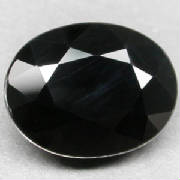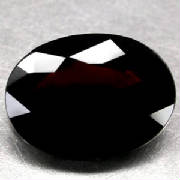Diopside is an important rock forming mineral in several metamorphic and basic to ultra basic igneous rocks.
Diopside is a part of an important solid solution series of the pyroxene group. The series includes the minerals hedenbergite
and augite. A series occurs when ions (in this case iron and magnesium) can freely substitute between each other. Diopside
is the magnesium rich end member of the series. The diopside-hedenbergite series is analogous to the amphiobole, tremolite/actinolite
series.
Diopside has several varieties, including a chromium-rich gem variety called chrome diopside. Violan is rare
blue variety found in some localities in Italy. There is also a green "cat's eye" variety that contains minute inclusions,
probably of rutile, that reflect light in such a way as to produce a lively linear luminscence within the crystal. Still another
variety is quite dark, with included rutile needles aligned so as to produce a 4-rayed star, hence the name star diopside,
or black star of India. Ordinary diopside is typically white or green and can have a nice glassy luster. While the
color of chrome diopside is much brighter, many specimens of ordinary diopside are also cut for gemstones. Mineral
specimens of diopside can be very striking in appearance, and of interest to mineral collectors.
Diopside was first described about 1800 and derives its name from the Greek dis, "twice", and òpsè,
"face" in reference to the two ways of orienting the vertical prism.

